Economic conditions of crofting 2015-18: survey
This report provides a detailed outline of the uses and financial situation of crofts in the years between 2015 and 2018.
2. Profile of crofters
Demographics
2.1 Overall, the profile of crofters is different than the general population, both across Scotland as a whole and within the crofting local authorities – this in line with the findings from the 2014 wave of the survey. Most notably, they tended to be older and were overwhelmingly male.
2.2 In line with 2014, the majority of crofters were male (74%), higher than the Scottish population as a whole[5]. Only a quarter were female. However, the proportion of female crofters has doubled from 13% to 26% in the last four years (Figure 2.1).
Figure 2.1 Gender differences over time: 2014 (751); 2018 (719)
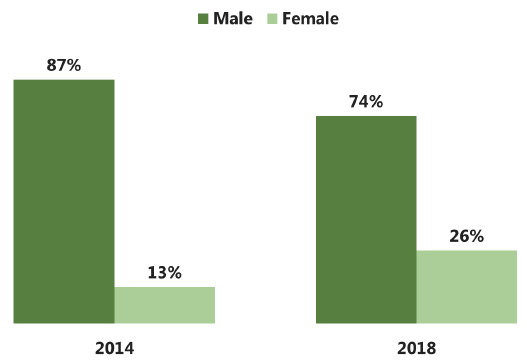
2.3 The age profile of crofters is older than the wider population – just under half (45%) are aged 65 and over, while only 3% are aged under 35 (Figure 3.2). For comparison, just under a fifth (19%) of people in Scotland as a whole[6] are aged 65 and over. Even when this is broken down further to look at the specific areas in question, crofters are older than the general population. For example, 25% of the population in Na h-Eileanan Siar are aged 65 or over, the comparable proportion for those in the survey was 45% (Table 2.1).
2.4 There was no statistically significant change in the age profile of crofters between 2014 and 2018.
Figure 2.2 Age profile (719)
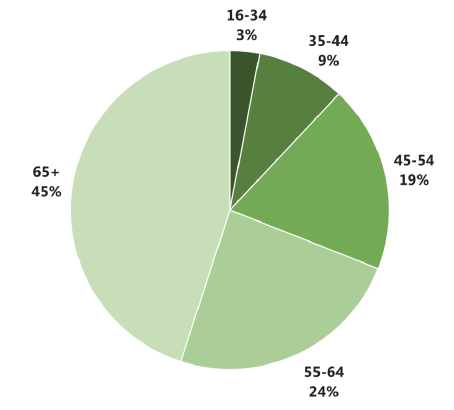
Table 2.1 Percentage aged 65 and over by local authority
| Survey results | Population estimates[7] | |
|---|---|---|
| Argyll and Bute (Base: 25) | 40% | 25% |
| Highland (300) | 45% | 22% |
| Na h-Eileanan Siar (299) | 45% | 25% |
| Orkney Islands (14) | 43% | 23% |
| Shetland Islands (72) | 46% | 19% |
2.5 It was most common for crofters to live in a two person household (47%), although a substantial proportion lived alone (22%). Five per cent lived in a household of five or more (Figure 2.3). There were no statistically significant differences in household composition from the previous wave of the survey.
Figure 2.3 Number of occupants (715)
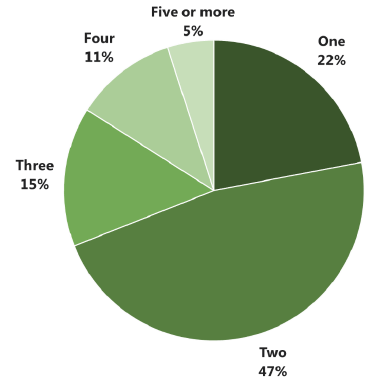
2.6 Figure 2.4 below shows the breakdown of age and gender of the additional adults in the household. There are some differences between the age breakdown between male and female additional adults in the household: while a third of the additional males living in crofter households are aged 34 and under (34%), only a fifth of the additional females were in the same age band (19%).
Figure 2.4 Gender and age of other occupants 16 and over (582)
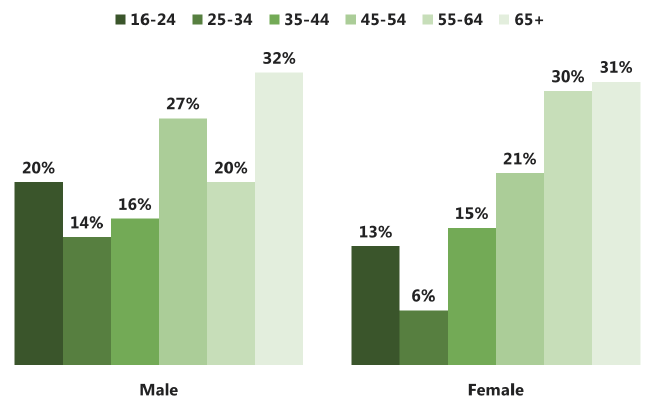
2.7 Over half (53%) of crofters who live with one or more other householders did not have any children under the age of 16 living at home or elsewhere (Figure 2.5).
Figure 2.5 Children under 16 in household (582)
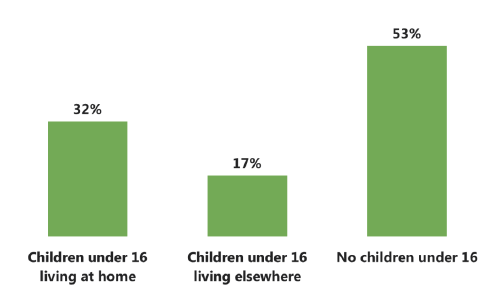
2.8 The majority of crofters were born in Scotland (83%), and a further 11% were born elsewhere in the UK. Only 1% were born outside of the UK (Figure 2.6). This has remained unchanged since 2014.
Figure 2.6 Birth place (722)
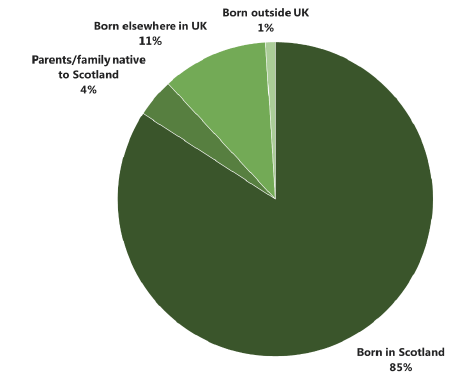
2.9 It was most common for crofters to say that they became one due to growing up in a crofter family (65%). The next most common reasons were that a family croft became available (38%) or that they wanted to live amongst a small community (23%) (Figure 2.7).
Figure 2.7 Reason for becoming a crofter (718)
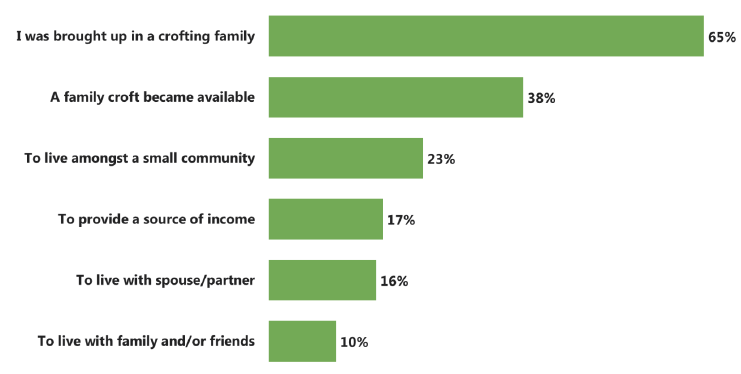
2.10 In line with the findings above, comments provided by the crofters demonstrate that familial connections and tradition play a key role in why they work their croft:
“To carry on the crofting tradition in the same township since the mid-1700’s for the future generations.”
“The croft was in my wife's family for at least 100 years.”
2.11 The majority of crofters reported that they had been crofting for 20 years or more (65%), a small decrease since 2014 when 70% had been crofting for this period of time. Just 6% had worked their croft for less than three years (Figure 2.8).
Figure 2.8 Number of years as a crofter (706)
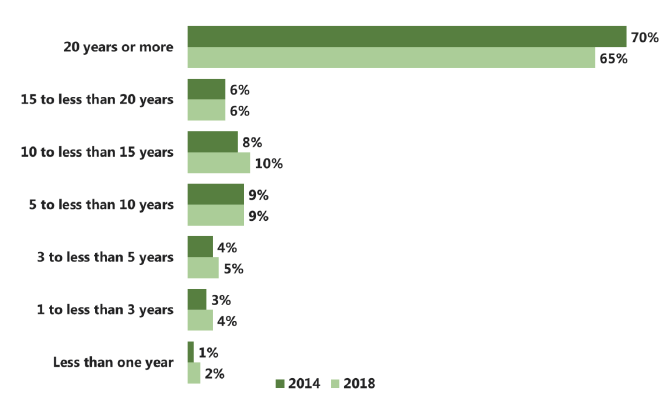
Contact
Email: Neil Davidson
There is a problem
Thanks for your feedback